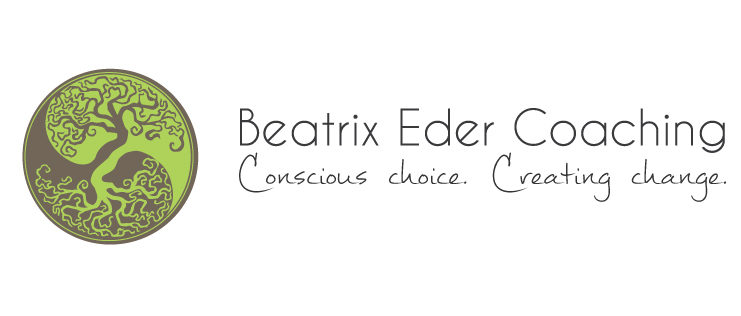
Why investing in leadership skills is indispensable
Solid leadership increases productivity and retains talent. Can you afford not to invest in leadership development?
Whenever leaders are asked what their biggest challenge is in leading their business, frequently the response is to navigate change. Change ripples through organizations at all levels: at the top, at the bottom, in between and all around. This is true whether the change is perceived as positive or negative, exciting or discouraging, important or unnecessary, or— as is often the case— all of these at the same time.
Signals of change
In order to effectively navigate change, we must first identify what it is, and the signals that show when it is time for change.
A) Some external signs of change
- Changes in the competitive environment
- Changes in customer preference
- Market pressure to reduce prices or to increase quality of products / services
B) Some internal sign of change
- Company has grown considerably in the number of employees, offices, product portfolio or market share
- Company has low operational efficiency
- Change in business strategy
- Change in management of the company
- Merger / acquisition / selling of business parts
- Low motivation of employees
In essence, when things that worked smoothly are not efficient and not bringing the habitual or desired result, some form of change is needed.
VUCA world
In today’s world, we experience this need for change more frequently and in more complex ways than one or two generations ago. The elements of these challenges are often combined in the acronym of VUCA (volatile, uncertain, complex, ambiguous) and used to describe the multilateral world we live in.
The two fundamental drivers of this world are:
1) Volatility: variables and dynamics change on a constant basis
2) Complexity: multiple interdependent variables interacting in unpredictable ways
The side effects of this cocktail are Ambiguity, Uncertainty, and Unpredictability.
As management expert Gary Hamel puts it:
“The world is becoming more turbulent faster than organizations are becoming more resilient.”
Major hurdles in times of change
Consequently with the constant change (a.k.a. turbulence or volatility), some of the major hurdles most companies face during transformations include:
- Limited and reduced resources
- Competing priorities,
- New systems to learn,
- Fear, doubt and fatigue.
Investing in leadership development, emotional intelligence, and communication / conflict transformation may seem like a counter-intuitive strategy in such challenging times when people and organizational departments are already under pressure to be efficient in a situation they don’t fully master. Yet the paradox is that leadership is most needed when there is change, ambiguity and uncertainty (VUCA). When things run smoothly, there is not much need for leadership as everyone knows what is expected of them on an individual level and where the group is heading.
Leadership development is crucial for organizations at this point in the global market. Organizations that are unaware of the benefits of such training may be at a great disadvantage to those that are, giving up a potential competitive edge in their industries.
Training and Coaching
While training and coaching are both useful in developing the current and future leaders of an organization, they have different focus points that are often complementing each other.
Training is a structured program of variable length that provides information and knowledge in a given area. Training people is impactful when organizations want to invest in the development of the skills of their employees. However, the retention and application of the transferred skills often remains low due to
- insufficient occasions to practice
- missing opportunities to follow-up
- returning to “business as usual”.
Coaching on the other hand, is a short- to medium-term relationship between an individual and a coach with the purpose of creating change. Coaching supports the individual to grow mentally and emotionally and improve their habits and behaviors by increasing awareness, strengthening identity and developing talents. Coaching provides a safe space for the client to explore new perspectives and emphasizes that the insights are translated into actions. Moreover, coaching emphasizes accountability to check upon goals and remove obstacles to the client’s success.
So, what role should leadership development play in organizations?
The main challenges that arise during leadership development take the forms of communication, responsibility, and execution. Having a clear sense of a plan and how to execute it is key. Next, sizing up what changes need to be made, and how to communicate this throughout different levels of management. It is also important that the team can relate to this new way of doing things on a personal level.
Additionally, assessing the productivity and skills of middle and senior management is vital. Leading the team through unexpected events, transitions and the fears / changes that result is easier with the proper training.
Lead with compassion, inspire others, thrive in change
Leaders are not only accountable for their decisions and the impact of those decisions. They are often evaluated according to their approach to get results. Highly effective leaders will mobilize teams to achieve the targeted vision and at the same time they will foster trust, cohesion and productivity.
But how exactly does leadership coaching help?
The goal of any organization is to be profitable and sustainable and leadership coaching improves organizations in many ways. Organizations with solid leadership at all levels
• Create a consciously crafted leadership model
• Translate organizational values into daily life
• Demonstrate higher standards of performance, engagement, and productivity
• Attract and retain talent, resulting in less turnover
• Build a sustainable pipeline for succession planning
• Increase management accountability
• Show employees that they are willing to invest in them
• Support employees to be autonomous in their work
Leadership coaching for long-term effects
Leadership development requires time and effort, but in the long term, has positive effects that ripple throughout all levels. Tightly knit teams that strive to go in the same direction will be less discouraged by difficulties and uncertainty, increasing their chance for success. Shared burden; shared success.
Developing leadership skills is essential to utilize resources effectively and position your organization as an influencer in the market.
There is an anecdote of a CFO speaking with a CEO:
CFO asks CEO, “What happens if we invest in developing our people and then they leave us?”
CEO: “What happens if we don’t, and they stay?”
The answer is in the question. Investing in our future is never a bad thing. Valued people are loyal, and pulling each other up results in the elevation of the organization as a whole.
Question to reflect on
- What are some internal / external changes currently going on for your organization?
- What is the leadership model of your organization?
- How does your organization navigate change at the level of the management / level of departments and teams / as a united team across hierarchical levels and functions?
- What can you do to improve these strategies?



